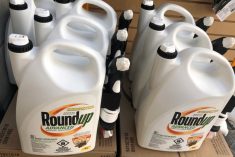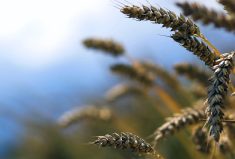Chicago | Reuters — Minnesota has launched an investigation to find the source of seed mixes contaminated with weed seeds after the aggressive, herbicide-resistant Palmer amaranth weed was found on 30 areas planted in a federal conservation program.
The weed grows very fast, reaching up to eight feet in height and can hold back commercial crops, potentially threatening hundreds of millions of dollars of production.
Yield losses have been reported of up to 91 per cent in corn and 79 per cent in soybeans, according to the U.S. Department of Agriculture (USDA), in areas where the weed has previously been found.
Read Also

Brazil to reap record soy crop in 2025/2026, increase exports
Brazil’s Conab said the country will reap a record soybean crop of 177.6 million tons in the 2025/2026 harvest year, according to data released on Thursday.
The weed is native to the dry, southwestern part of the U.S. In some parts of that region, it has developed resistance to glyphosate, the active ingredient in Monsanto’s Roundup and other herbicides.
The federal Conservation Reserve Program (CRP) pays farmers to return tilled acreage to native plants. The Minnesota investigation is seeking to determine if the program inadvertently introduced the weed into the state.
Palmer amaranth also has appeared in Iowa, Illinois, Indiana, Ohio, Nebraska, Wisconsin and Michigan, including on land in the federal conservation program. Growers and weed experts on the Canadian Prairies and in border states such as North Dakota are also watching the weed’s northward progress into the Plains region.
Minnesota tracked down the weed on the conservation areas in the southwestern part of the state, after the person who created the seed mix and planted it said that the plots might be contaminated. He had been alerted by a client who had spotted the weed on conservation land, according to state agriculture department spokesman Allen Sommerfeld.
Minnesota now wants to find out where the weed seed came from and how it got into the conservation mix, according to University of Minnesota professor and extension weed scientist Jeff Gunsolus, a researcher involved in the investigation.
Under the state’s seed law, it is illegal to sell or transport seed mixes containing the Palmer amaranth seed. Penalties can include fines of up to $7,500 per day, Sommerfeld said (all figures US$).
Investigators are interviewing individuals, including some at seed companies, as well as analyzing seeds and mixes, and checking the accuracy of seed labels, said Clifford Watrin, a supervisor of seed law at the state’s agriculture department.
Last week, Watrin told native seed suppliers and planters in a letter that extra monitoring of seed supply was needed. The agriculture department now has a DNA test for Palmer amaranth seeds, as the seed cannot be distinguished from other weed seeds by sight. Agriculture officials hope this test will help stop more Palmer amaranth seeds from entering the local market.
Minnesota has set aside $50,000 for the investigation, said Watrin. Governor Mark Dayton has called for another $300,000 a year to boost resources for enforcing state regulation over weeds, Sommerfeld said.
Though Palmer amaranth has also appeared in conservation plantings in other states, it has been hard to narrow down the source.
Farmers of commercial crops have been keen to sign up for the federal conservation program to supplement incomes as grain prices fall. USDA said Tuesday it expects net farm income to fall in 2017 to its lowest level since 2002.
USDA told Reuters it was aware of the problem present in seed mixes, but does not monitor seed lots purchased by participants.
— Renita D. Young is a multimedia journalist covering commodities for Reuters in Chicago. Includes files from AGCanada.com Network staff.














